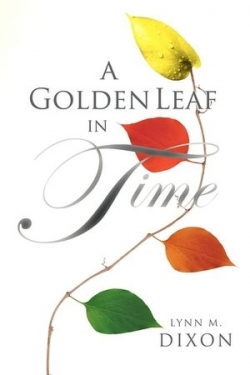
A Golden Leaf in Time
A Golden Leaf in Time explores the introspective journeys of Phoenix, a young woman who finds herself floundering in the wrong job in the wrong town, and Trey, a man who becomes equally lost in a difficult relationship. Chapters alternate between the two characters’ points of view, following each on their paths toward self-fulfillment.
Among the challenges Phoenix faces an unfaithful boyfriend, vindictive coworkers, and the loss of her twin brother. Her emotional response to each of these issues is examined, but the events themselves are often not explored in great depth. For instance, minimal information is shared about her relationship with her deceased brother. Although several chapters mention that she is bothered by the circumstances of his death, only a few sentences are devoted to the subject. A scene is included toward the end which explains his death more fully, but the storyline’s overall lack of development may leave readers unengaged in the outcome.
Trey’s chapters are filled with similar angst, though his issues are primarily the result of finding himself enmeshed in an intolerable relationship. Like Phoenix, Trey feels emotions to a markedly strong degree, resulting in many dramatic monologues, sometimes expressed as thoughts but often spoken. While showering and lamenting an unwanted engagement, he speaks aloud: “I feel like marrying her is a death sentence. I will be like the walking dead. How will I ever smile again? Will the sun ever mean anything again?” The extremely emotional reactions of both main characters are clearly meant to illustrate the depth of their soul-searching moments, yet too often they lean toward melodrama.
Lynn Dixon’s chapters generally follow a distinct pattern, wherein Phoenix or Trey reacts to an event or issue and consequently finds comfort in a book or song lyric. The majority of chapters include a reference to one of these, citing the name of the artist and book/song title as well as a quote. This serves to emphasize both characters’ strong belief in daily self-affirmation. In addition, chapters often seem more focused on these life lessons than on the characters themselves. However, the book does progress toward a neat, if predictable, conclusion.
The story is also bogged down by novice writing errors. These include unnatural dialogue, frequent misplacement of quotation marks, and improper word usage, such as the repetitive use of “anecdote” in place of “antidote.” The author, who is currently a librarian, and has taught high school and college English, a fact which makes the basic writing errors particularly curious.
Dixon’s desire to reach readers and inspire them through Phoenix and Trey’s journeys is clearly conveyed, and she has put a great deal of effort into sharing references which may be helpful to interested readers. Unfortunately, potential inspiration is lost among the writing problems and melodramatic characterization. Ultimately, A Golden Leaf in Time is simply too unpolished to engage readers in its current form.
Reviewed by
Jeannine Chartier Hanscom
Disclosure: This article is not an endorsement, but a review. The publisher of this book provided free copies of the book and paid a small fee to have their book reviewed by a professional reviewer. Foreword Reviews and Clarion Reviews make no guarantee that the publisher will receive a positive review. Foreword Magazine, Inc. is disclosing this in accordance with the Federal Trade Commission’s 16 CFR, Part 255.
